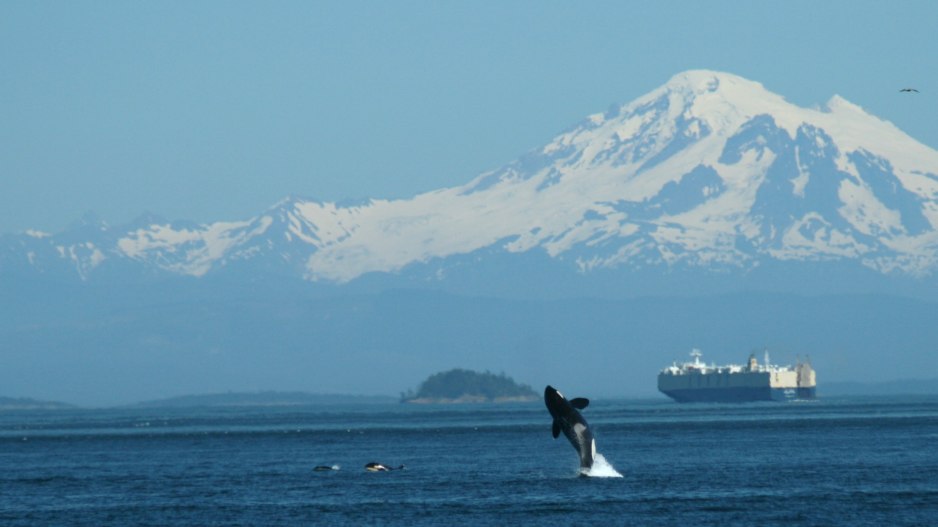Fisheries scientists have identified a pattern of low birth rates and high death rates in the Southern Resident Killer Whale (SRKW) population every other year since 1998, suggesting there may be some link to pink salmon.
A study published in the Marine Ecology Progress Series looked at SRKW births and deaths dating back to 1976 and identified “an unprecedented synchronized biennial pattern of birth and mortality."
Starting in 1998, and continuing through 2017, the researchers noticed a clear biennial pattern, with mortality rates in both newborns and older whales being 3.6 times higher – and successful births 50% lower – in even years, compared to odd years.
There’s one other thing that occurs in the Pacific Ocean on a biennial cycle: pink salmon.
“None of the purported factors of SRKW decline (Chinook salmon abundance, toxic contaminants, ship noise) can directly explain the biennial demographic pattern,” the study states.
“In contrast, the extreme biennial pattern in abundance of pink salmon, coupled with the known or suspected effects they have on other species and ecosystem processes elsewhere in the North Pacific, is consistent with the demographic pattern observed in SRKWs.”
“It was a shock to us,” said Greg Ruggerone, a Washington State fisheries scientist and lead author of the study.
“It only took a minute to see it, once I saw the plot – the data that was on the Center for Whale Research’s webpage. The fact that we see this biennial pattern in this long-lived apex predator is just amazing.”
Andrew Trites, director of the Marine Mammal Research Unit at the University of BC, said the pattern gives scientists some new leads to follow, as they try to figure out why the Southern Resident Killer Whale population has been declining, while their northern cousins have been increasing in number.
“It’s surprising,” Trites said. “I’ve had more people send me this paper than any other paper, I think. So it’s caught everybody’s attention."
Pink salmon are the most abundant salmon species in the Pacific Ocean, and their numbers are augmented by commercial hatcheries in Alaska
While other salmon species generally live for four years (sometimes longer), pink salmon are unique in that they have only a two-year lifespan.
The odd- and even-year pink salmon populations are genetically distinct, and there tends to be much higher abundance of odd-year pink salmon than even-year pinks.
Annual returns of pink salmon in the Salish Sea since 1976 average out to 17.8 million in odd years, compared to an average of less than 1 million in even years, according to the recent study.
“We suspect that the biennial pattern of mortality and birth (in killer whales) is directly linked to the extreme biennial pattern in abundance of adult pink salmon,” the study concludes.
But why would the abundance of pink salmon have an impact on Southern Resident Killer Whales? After all, their primary diet is Chinook, not pink salmon.
Ruggerone said it’s not clear yet how pink salmon abundance, or low abundance, would have an impact on killer whales.
One theory is that a high abundance of pink salmon in odd years interferes with the whales’ ability to feed on Chinook.
“Reduced foraging efficiency of the whales would lower their nutritional status, which would be expressed in the following even year,” the study suggests.
It appears the biennial pattern only began to emerge after 1998. That coincides with large declines in commercial pink salmon harvesting after 1998, the paper notes. It also coincided with strong El Nino patterns and a regime shift in the Pacific Ocean – the decadal oscillation – which also had an impact on other marine species.
Trites said it’s possible an abundance of pink salmon in odd years simply means less food for Chinook in those years, which results in Chinook that are thinner and have less fat content.
He said other studies have suggested a correlation between odd-even fluctuations in pink salmon abundance and other marine species as well, including chick survival rates of a certain species of gull in Alaska.
Killer whales have a gestation period of 15 to 18 months.Trites said it’s possible that a killer whale that gets pregnant in a year when there’s low pink salmon abundance may simply have more to eat because they are feeding on Chinook that have higher body fat content. When the female gives birth two years later, it would be in an even year, when conditions are once again favourable, with fatter Chinook.
“I think it’s as simple as the pinks are eating a lot of the lipid-rich smaller species that are in the ecosystem, so there’s nothing there in those years of high pink abundance for the Chinook to eat, so they would be thinner or have less body fat,” Trites said.
“So it’s conceivable that the Chinook have got odd and even years when they are in better shape. The nice thing with what they’ve put forward is we now have some new ideas to test.”




